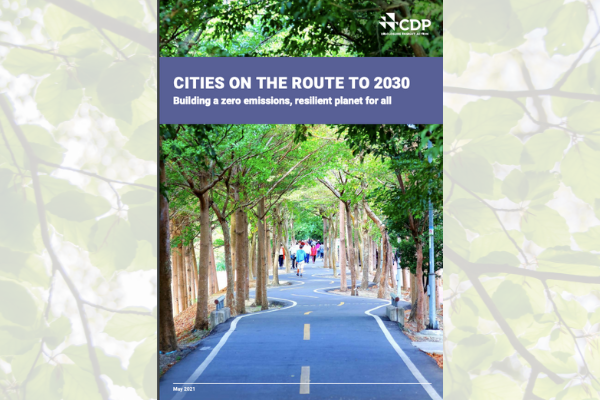
Submitted by firuze.alpaydin on May 17, 2021
As Covid-19 continues to impact the health of populations across the globe, CDP’s new report “Cities on the Route Towards 2030: Building a Zero Emissions, Resilient Planet for All” highlights the ongoing climate action of cities during 2020 despite the pandemic and examines what is needed to meet the requirements set by climate science, to build a 1.5°C aligned and resilient future.
In the past ten years, CDP has seen a 17-fold increase in the number of cities disclosing through the CDP-ICLEI Unified Reporting System, from 48 in 2011 to 812 in 2020. Producing 70% of emissions globally and with 50% of the world’s population living within their walls, cities are critical partners in tackling climate change, cutting emissions, and building a resilient future for all.
CDP’s analysis of 2020 data also shows that 41% of cities have not carried out a climate risk and vulnerability assessment (CRVA) – a key step in climate preparedness where the city identifies people, infrastructure, and resources at risk from the growing physical hazards of a changing climate.
Identifying current and future risks is crucial to be able to make cities resilient. Research shows that cities that undertake a CRVA are more than twice (2.7x) as likely to report long-term hazards than those cities without a CRVA, and report almost six times as many (5.7x) adaptation actions.
Responding cities also point to a potential link between infectious disease and climate, 20% of cities (166) report that they are facing a risk of infectious diseases. Close monitoring and management of this risk will be essential for cities to keep citizens safe from future pandemics.
Cities disclosing through CDP are already outperforming on urgently needed decarbonization compared to the global average: 42% of their energy mix comes from renewable sources compared to a 26% global average.
However, 25% of cities report budgetary constraints as a barrier to further action.





